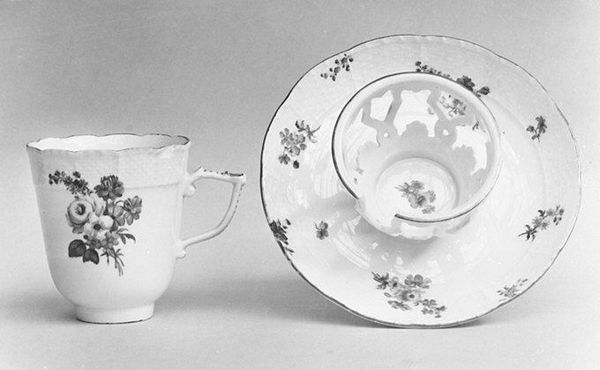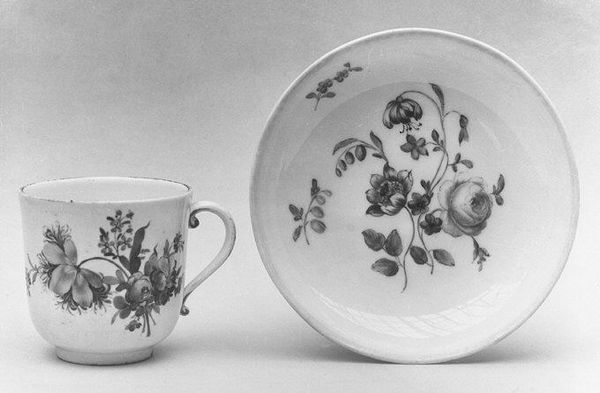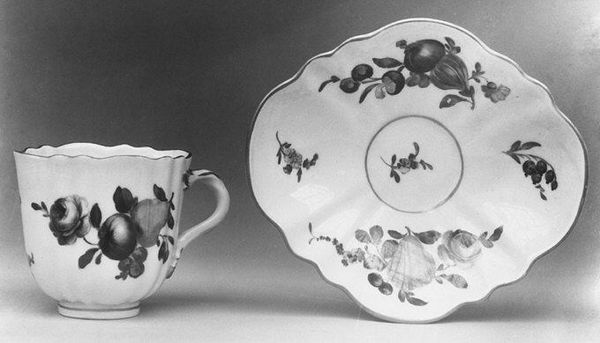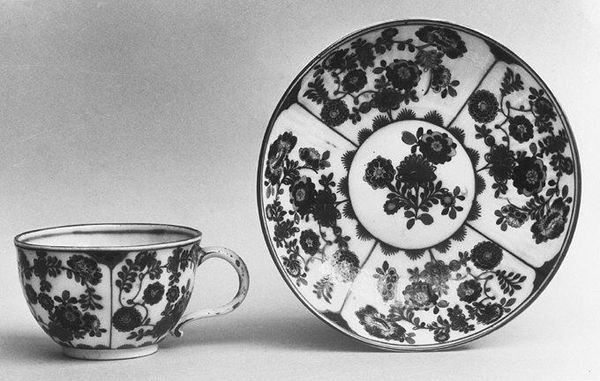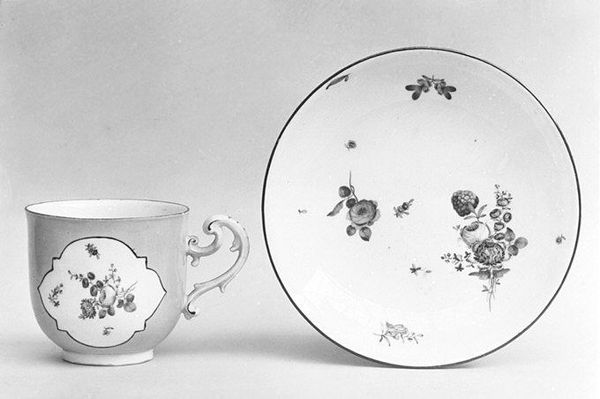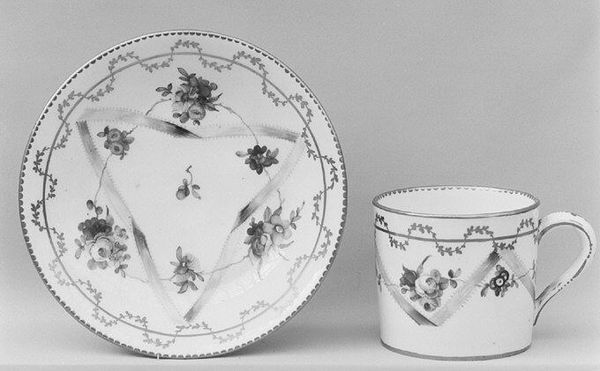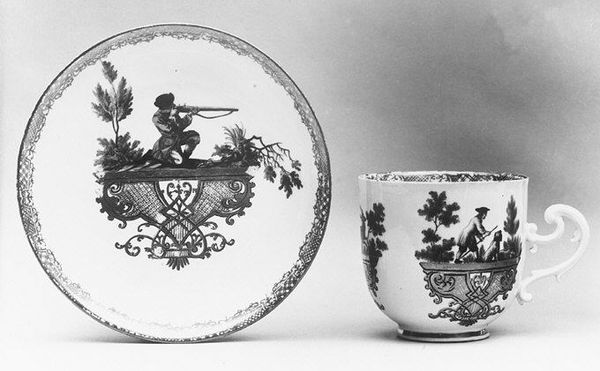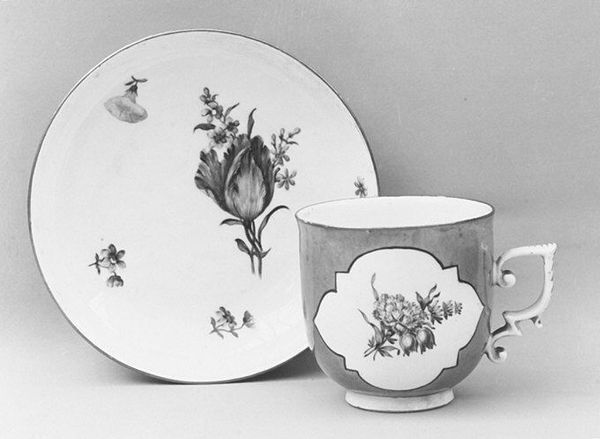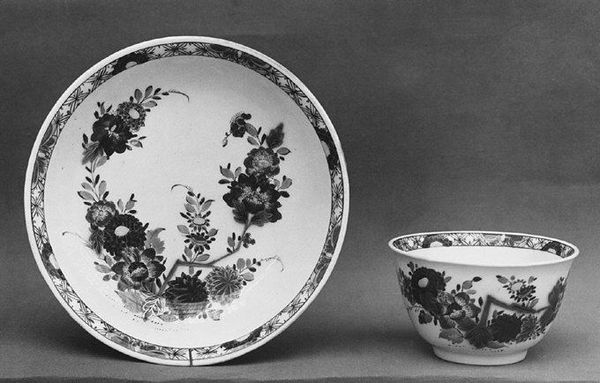
ceramic, porcelain, sculpture
#
ceramic
#
jewelry design
#
porcelain
#
sculpture
#
romanticism
#
decorative-art
Dimensions: Height: 2 1/2 in. (6.4 cm); Diameter: 2 7/8 in. (7.3 cm)
Copyright: Public Domain
Curator: It’s remarkable, isn’t it? We are looking at a porcelain cup and saucer, produced by the Meissen Manufactory between 1796 and 1814. You can find it right here at the Metropolitan Museum of Art. Editor: It's starkly beautiful. I'm immediately struck by the monochrome palette – almost a deliberate absence of color. It creates a somber mood, rather melancholic, despite the floral designs. Curator: The absence of vibrant colors might indeed reflect the Romantic sensibilities of the period. Think of the era’s preoccupation with emotion, nature, and perhaps even a sense of loss. The flowers themselves, though beautifully rendered, aren’t just decorative; they evoke the ephemeral nature of beauty and life. Editor: Right. Flowers so often act as symbols for remembrance, or even mourning. There's also something very controlled about the floral arrangement; the bouquet seems carefully placed, almost as if to contain the wildness of nature within a domestic, civilized space. That speaks volumes about the social expectations of the era. Curator: Exactly. The very material, porcelain, becomes symbolic too. This material was considered precious. Drinking tea, and displaying sets like this, spoke to elevated social status. Note how the shape of the cup's handle has a clear classical antecedent, too; a straight angular geometry instead of a flowing, organic curve. These were powerful statements, declaring aesthetic preferences and reinforcing existing class structures through every sip of tea. Editor: It is amazing to me how such an intimate object – something you'd hold in your hand, bring to your lips – can embody such a wide range of meanings. What started as a simple vessel transforms into a complex mirror reflecting societal values, artistic movements, and the constant human dialogue with the fleeting nature of existence. Curator: Precisely. It’s a little artifact loaded with messages. And it provides invaluable insight into the socio-political milieu from which it emerged, right? Editor: Indeed. Who knew so much significance could be packed into something used for tea?
Comments
No comments
Be the first to comment and join the conversation on the ultimate creative platform.
